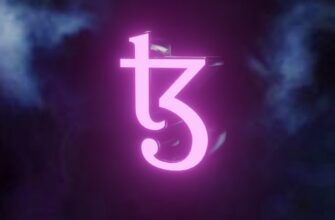- What is Ethereum RPC?
- How Ethereum RPC Works
- Essential Ethereum RPC Methods
- Public vs Private RPC Endpoints
- Setting Up Your RPC Connection
- RPC Security Best Practices
- Ethereum RPC FAQ
- What’s the difference between RPC and Web3?
- Can I use Ethereum RPC for testnets?
- Why do RPC requests sometimes fail?
- Is there an alternative to JSON-RPC?
- How do I choose an RPC provider?
What is Ethereum RPC?
Ethereum RPC (Remote Procedure Call) is the communication protocol that allows external applications to interact with the Ethereum blockchain. Acting as a messenger between your software and Ethereum nodes, RPC enables actions like querying blockchain data, sending transactions, and deploying smart contracts. Without RPC endpoints, wallets, dApps, and developer tools couldn’t access or modify the decentralized network’s state.
How Ethereum RPC Works
Ethereum uses JSON-RPC, a lightweight protocol where requests and responses are formatted in JSON. Here’s the workflow:
- A client (like MetaMask) sends a JSON-formatted request to an Ethereum node’s RPC endpoint
- The node processes the request by executing the specified method
- The node returns a JSON response containing results or errors
This client-server model operates over HTTP, WebSocket, or IPC connections, with HTTP being most common for web applications. The Ethereum JSON-RPC specification standardizes over 100 methods for consistent interactions.
Essential Ethereum RPC Methods
Key methods developers use daily include:
- eth_blockNumber: Returns the latest block number
- eth_getBalance: Checks an address’s ETH balance
- eth_sendTransaction: Broadcasts signed transactions
- eth_call: Executes read-only smart contract functions
- eth_getLogs: Retrieves event logs from smart contracts
These methods form the backbone of blockchain interactions, from checking gas prices to deploying DeFi protocols.
Public vs Private RPC Endpoints
Developers have two primary options for RPC access:
| Public RPC | Private Node |
|---|---|
| Free services like Infura or Alchemy | Self-hosted Geth or Nethermind node |
| Quick setup but rate-limited | Full control and customization |
| Potential downtime risks | Requires significant infrastructure |
For production dApps, dedicated node providers offer reliability, while personal nodes suit developers needing unrestricted access.
Setting Up Your RPC Connection
Connect to Ethereum RPC in 3 steps:
- Choose endpoint: Use a public provider URL or local node address (http://localhost:8545)
- Configure client: In web3.js:
const web3 = new Web3('https://mainnet.infura.io/v3/YOUR_KEY') - Send requests: Call methods like
web3.eth.getBlock('latest')
Always handle errors and implement retry logic for network instability.
RPC Security Best Practices
Protect your RPC interactions with these measures:
- Use HTTPS endpoints exclusively
- Restrict access with authentication tokens
- Implement rate limiting to prevent abuse
- Validate all input data to avoid injection attacks
- Monitor for unusual request patterns
When using MetaMask, never expose your private key through RPC calls—transactions should always be signed client-side.
Ethereum RPC FAQ
What’s the difference between RPC and Web3?
RPC is the underlying protocol, while Web3.js and Ethers.js are libraries that abstract RPC calls into developer-friendly functions.
Can I use Ethereum RPC for testnets?
Yes! Providers offer endpoints for Goerli, Sepolia, and other test networks. Simply replace the mainnet URL with the testnet equivalent.
Why do RPC requests sometimes fail?
Common causes include network congestion, incorrect parameters, rate limiting, or node synchronization issues. Always check error messages for specific codes.
Is there an alternative to JSON-RPC?
GraphQL interfaces like The Graph offer indexed querying for complex data, but JSON-RPC remains essential for transaction execution.
How do I choose an RPC provider?
Evaluate uptime history, supported networks, request limits, response times, and pricing tiers. Popular options include Infura, Alchemy, and QuickNode.








